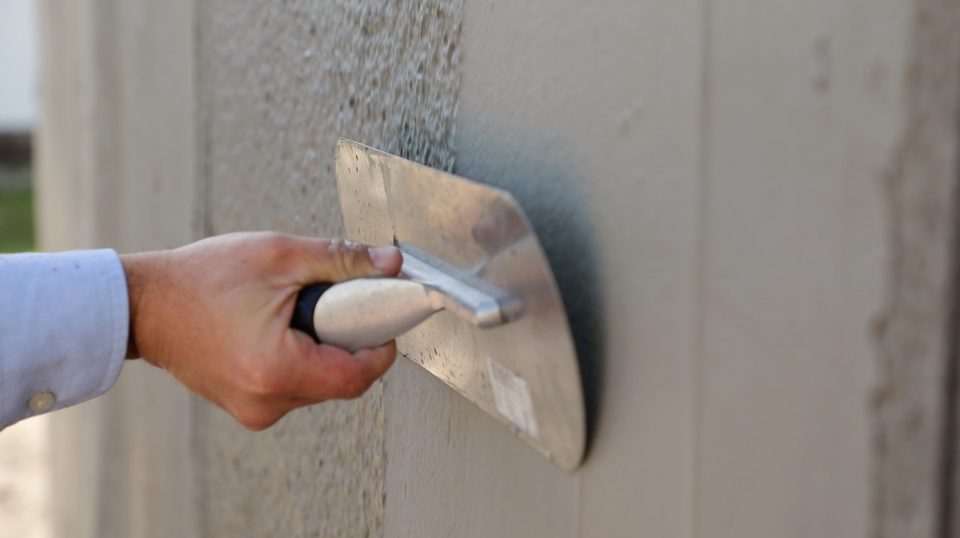By: William Seawell, Induron Technical Service Manager
 Concrete is a true staple of construction. Modern applications for concrete come in many forms, and it’s especially useful for industrial applications like water treatment plants, fabrication facilities, power facilities, and more. While concrete is an incredibly resilient material that can stand the test of time, it still requires upkeep and maintenance to remain strong.
Concrete is a true staple of construction. Modern applications for concrete come in many forms, and it’s especially useful for industrial applications like water treatment plants, fabrication facilities, power facilities, and more. While concrete is an incredibly resilient material that can stand the test of time, it still requires upkeep and maintenance to remain strong.
Signs of wear and damage can be anything from seemingly minor problems like delamination to structural concerns, like cracks and crazing. Typical fixes include corrosion protection, crack repairs, and patch-and-fill methods. Regardless of the type of repair, the finishing step often consists of coating concrete.
A concrete coating provides a durable layer of protection against heavy traffic, abrasion, chemicals and moisture exposure while beautifying the concrete surface, simplifying maintenance and enhancing skid resistance. When coating concrete, it’s vital to understand the characteristics of concrete, concrete surface preparation standards, optimal conditions for coating concrete, and how to select a concrete coating.
Characteristics of concrete
First and foremost, concrete is NOT STEEL. While this is an obvious point, it’s really important. Steel is hard and impermeable; therefore, way more predictable than concrete regardless of the environment.
Concrete, on the other hand, is the opposite of predictable or consistent. Concrete varies A LOT. Because concrete is made on the job site, it is subject to change with the atmosphere. Plus, the contractor has control over the finished substrate – he can add more or less water to the mixture depending on the conditions of the job site. Concrete is extremely porous and permeable. Even once cured, concrete continues to grow and shrink. It’s almost like a living organism!
Concrete surface preparation standards
Due to the ever-changing nature of concrete, surface preparation is key in successfully coating concrete. For concrete coatings, we follow ICRI (International Concrete Repair Institute) surface preparation standards, including SP3, SP5 and SP7.
The surface preparation standards are much more subjective than the surface preparations for steel substrates. And, when you have a lot of subjectivity, it leaves room for problems.
Defining the surface profile of concrete is not as quantifiable as it is with steel. With concrete, 10 guys can examine an area of concrete and specify different surface preparation needs.
Optimal conditions for coating concrete
The general philosophy with concrete is that it is the complete opposite of steel, in respect to temperature and environment. It is preferable to coat steel when temperatures are rising, but with concrete, it is the opposite. Ideally, you should coat concrete when the temperature is above the dew point and beginning to drop. Concrete lets more gases out with warmer temperatures, which is the worst conditions to coat under. The worst outgassing conditions should occur while the coating is still in liquid form.
Choosing a concrete coating
The term “coating” is often used broadly to refer to just about any liquid or semi-solid material applied to cured concrete, including cement-based toppings and overlays, paints, and epoxy-aggregate systems. There are epoxy, polyaspartic, polyurethane and polyurea coatings.
Concrete installed in abrasive environments, such as wastewater treatment facilities and power plants, suffers constant wear and tear. In these situations, high-performance coatings, called epoxy mortars, are the fundamental to repairs that restore deteriorated masonry substrates. These products are applied as a primer, to create a durable, resilient barrier.
Meet Mortarchem: The next generation of cementitious epoxy mortar
Cementitious epoxy mortars are a vital step in most concrete coating projects, but we found that the existing products available are fraught with problems and application challenges. Designed to simplify the application process while delivering better performance and improved production, Mortarchem represents the next generation of cementitious epoxy mortar.
In fact, Induron applied Mortarchem side-by-side with competitive products to show how superior attributes like viscosity, workability, material weight and film build work to improve applicator outcomes in the field.
Like what you see? Contact an Induron sales representative to schedule a demonstration or learn more about using Mortarchem in your next concrete coating project.
